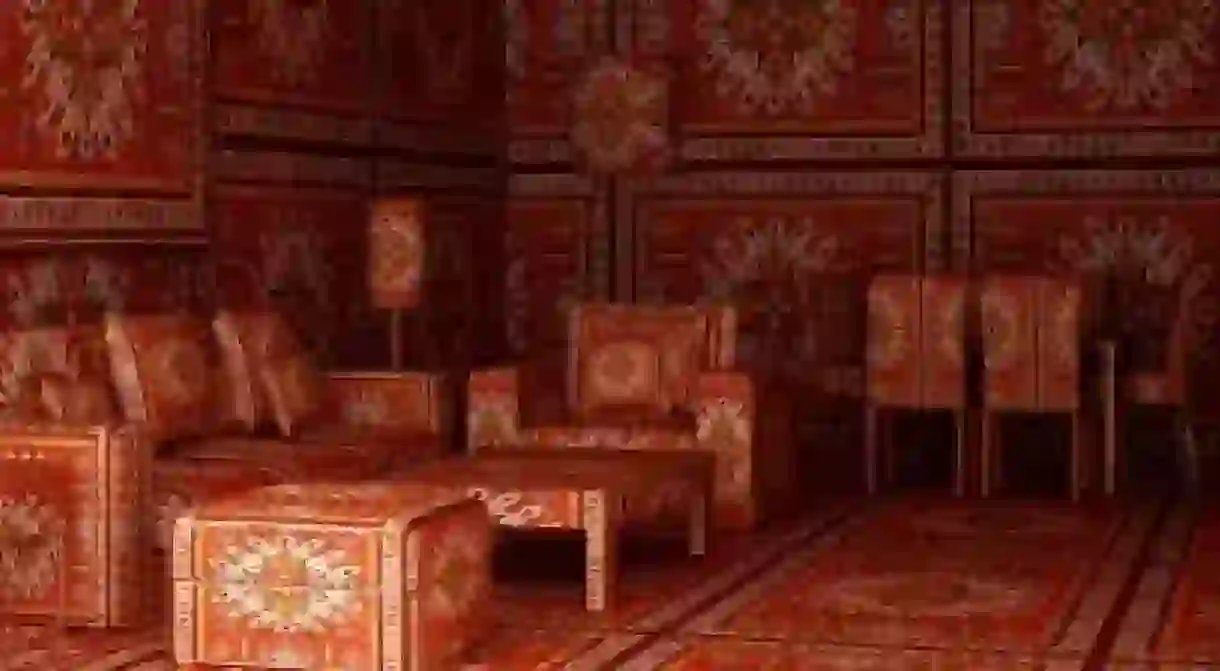Azerbaijan's Pavilion At The 55th Venice Biennale

Azerbaijan returns with six artists for the 55th Venice Biennale with the theme of ‘Ornamentation’, as chosen by contemporary art advisor and this year’s curator of the Azerbaijan Pavilion, Herve Mikaeloff.

“In Azerbaijan, daily life represents a constant source of inspiration for creation, especially through decorative arts. Since modern art, artists have used ornamentation and decorative patterns to fuel their research of surface, space and new forms.” – Herve Mikaeloff
The great tradition and rich culture of Azerbaijan is explored through the eyes of a new generation in the 2013 Venice Biennale with works from Rashad Alakbarov, Sanan Aleskerov, Chingiz Babayev, Butunay Hagverdiyev, Fakhriyya Mammadova and Farid Rasulov. Each of these artists have their own distinctive creative vision and explore notions of space in very different ways. Lavish decoration and images of beauty have been central fixtures of Azerbaijan’s culture for centuries and the idea of time is also very much at the forefront of all the works exhibited by the National Pavilion this year. The theme of ornamentation, the act of adding details to an object in order to beautify it, provides ample scope for modern interpretations of ancient ideas.

Rashad Alakbarov, a graduate from the Faculty of Decorative Arts at Azerbaijan State Academy of Fine Art, has explored ideas through painting, sculpture, theatre decoration, video art and architectural design. His main focus now is the use of shadows in his conceptual installation work. With his earlier piece, Ornament, Alakbarov creates a simple structure of wooden slats that are reflected upon a wall, thus forming a wonderfully whimsical depiction of an ornament of the traditional sash. These complex installations give birth to traditional images and in doing so create a paradoxical fusion of tradition and contemporaneity, an effect seen in all of this year’s exhibiting artists in different ways.

Sanan Aleskerov is known for his observation of changes in cities and landscape and his Polaroid series on show this year, depicts a deeply personal vision of the ornaments and landscapes of his country. “Photographs change the essence of things. Symbols, signs, prophesy, legend – yesterday, today, and tomorrow – this is the real proof of life.” His use of photography in relation to notions of time and cultural history make for a uniquely personal perspective on Azerbaijan’s artistic roots.

Chingiz Babayev, a graduate from the Sculpture Faculty at the Baku Arts University believes that nothing is more important than land art. His long-standing interest in art in nature has led the way for works such as Silk Way, a large carpet handmade from different materials and exhibited in an exterior space as if it were a sprawling flower bed featuring striking colours and precious plants. This use of modern forms of expression to present traditional images will continue in his work at this year’s exhibition with the use of different spaces as blank canvases for his re-writing of historical periods with symbols from Azerbaijan’s rich visual culture.

Little is currently known of the work being presented by the accomplished animator, painter and graduate of Fine Art, Butunay Hagverdiyev, other than his subversive painting of letters to create abstract images composed of their shapes, rather than using letters to communicate in with words. Fakhriyya Mammadova is known for conducting restoration work on ceramics and sculpture. She also experiments with macro-photography and currently works with conceptual photography that aims to capture the transitory moments of life. The contrasts between photography and traditional practices is explored in her work in which she follows and photographs a young bride during her wedding, observing the different steps of this important traditional ceremony.
Farid Rasulov creates large scale paintings, installations and sculptures, which are full of apparent symbolism and explore decoration through the notion of space. His use of ready-made carpets is another look into this duality between modern design and oriental atmosphere.














